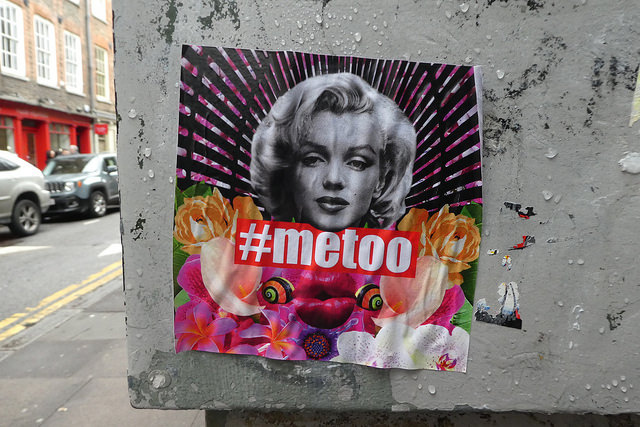Blog
We First 5: Verizon, Nivea, & Carl’s Jr.

Sexual harassment in the workplace is, unfortunately, nothing new. Women have had to endure unwanted verbal or physical abuse on the job for centuries. While there has been an increase in awareness and restitution – from the coining of the term “sexual harassment” in 1975 to Anita Hill in the early 1991 – the problem is still prevalent today.
The #MeToo movement is the latest cultural event that brings light to the unacceptable, yet widely practiced, sexual abuse of women in the workplace and everyday life. Despite its historic prevalence, this instance of heightened media attention around sexual harassment is different from previous instances. That’s because of widespread adoption of the internet and social media.
What has been hidden behind closed doors can now be easily exposed to the public. This increased transparency is having an especially large impact on corporate culture and companies like Uber and Netflix are taking bold efforts to make a stand.
Complaints about sexual harassment in the workplace not only create internal problems but can also tarnish your brand image. Plus, holding your own culture to high standards is a vital part of operating a creative, productive and profitable business.
It’s also hard for companies to keep scandals from consumers. What used to be a monologue from brands to consumers, is now a lucid dialogue. It follows that increased access to information fosters heightened awareness around corporate social responsibility. And this influences consumer behavior. In fact, 76 percent of consumers would boycott a brand if it doesn’t support values they believe in.
The risk of consumer backlash is causing companies to reprimand unacceptable sexual behavior in the workplace and get very clearly about their zero tolerance policies for the future. Recent instances of sexual harassment in business culture offer valuable lessons for corporate leaders looking to build an internal environment of diversity and inclusion.
1. Foster a culture of transparency accountability:
Open communication is a vital aspect of any efficient businesses. Transparency and accountability not only help build purposeful corporate culture, but also strengthens your brand image to in the eyes of conscious consumers.
In response to the #MeToo movement and the Harvey Weinstein scandal, advertising personality Cindy Gallop encouraged people who have experienced sexual harassment in the industry to step up and share their stories “naming names.”
In further protest, Gallop lead a Twitter boycott in retaliation against the social media platform’s suspension of Rose McGowen. McGowen was temporarily banned from using Twitter because she released a telephone number in relation the Weinstein debacle. Instead, the brand could have supported McGowan’s public outreach while maintaining classified information private.
Gallops actions show that if you aren’t transparent about sexual harassment in the workplace, other people will eventually come out and disclose the truth. Further, brands should encourage safe ways to take action and hold aggressors accountable, rather than stifling the voice of victims.
Ultimately, coming from a place of honesty and accountability is a vital step in addressing sexual harassment or other inappropriate workplace behaviors.
2. Clean house:
While transparency is necessary, cleaning house of sexual aggressors – no matter their status – is a powerful signal to employees and the general public. It shows that there’s no tolerance for sexual misconduct or the abuse of power for personal enjoyment within your brand.
Although it happened before the #MeToo movement, the resignation of Uber CEO Travis Kalanick and the Uber sexual harassment accusations, is an impactful example that shows how a lack of purposeful leadership can lead to brand crisis and personal job risk.
Ultimately, by connecting the financial wellbeing of employees, executives and partners with their social conduct, you can help foster a culture of safety and respect necessary to build a purposeful and efficient business.
3. Choose purpose-driven partners:
Not only is it important to ensure your core team members work to build a culture of inclusion, but it’s also paramount to cultivate partnerships with people that share your values.
Silence is consent. If you are working with an individual or organization that perpetuates unacceptable behavior – be it sexual harassment or a different social or environmental harm – you are essentially part of the problem. So a great way to clean your hands and showcase your commitment to purpose is to choose socially conscious partners.
An example of a brand that cut ties with core partners over sexual harassment misconduct is Netflix. The network ended numerous shows – including House of Cards and Louis C.K’s planned movie – over sexual harassment allegations. Clearly, Netflix does not tolerate sexual misbehavior and is showing that to their community and the world in a big way by cutting big productions.
The key takeaways are that social media is changing the way employees and consumers interact with brands. In turn, brands are changing the way they do business to reflect how they want people to perceive them. This fundamental difference in today’s society makes the #MeToo movement especially influential on women’s rights and sexual harassment in the workplace. To foster a purpose-driven culture of inclusion and productivity you must encourage transparency, accountability and connect business decisions with core brand values.
Connect with We First!
Twitter: @WeFirstBranding
Facebook: WeFirst
LinkedIn: WeFirst
Youtube: WeFirstTV
Join our mailing list and invite Simon to speak at your next event or meeting.

